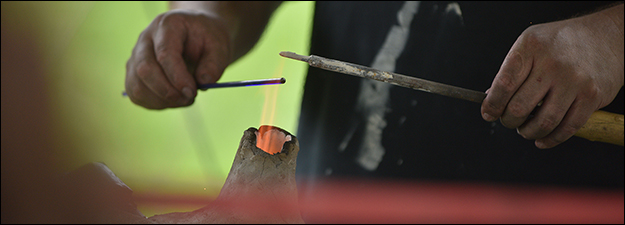Sensory Reflections: Traces of Experience in Medieval Artifacts I
Sponsoring Organization(s)
Center for Medieval and Early Modern Studies, Stanford Univ.
Organizer Name
Fiona Griffiths, Kathryn Starkey
Organizer Affiliation
Stanford Univ., Stanford Univ.
Presider Name
Beth Williamson
Presider Affiliation
Bristol Univ.
Paper Title 1
The Space of Relics and the Viewer's Approach
Presenter 1 Name
Cynthia Hahn
Presenter 1 Affiliation
Hunter College and Graduate Center, CUNY
Paper Title 2
Uncanny Vitality: Encounters with the Burgos Crucifix
Presenter 2 Name
Elina Gertsman
Presenter 2 Affiliation
Case Western Reserve Univ.
Paper Title 3
The Matter of Fear: The Harbaville Triptych and Its Staging of Judgment in Ivory
Presenter 3 Name
Ravinder Binning
Presenter 3 Affiliation
Stanford Univ.
Start Date
14-5-2016 10:00 AM
Session Location
Schneider 2335
Description
The rich potential of medieval matter (most obviously manuscripts and visual imagery, but also liturgical objects, coins, textiles, architecture, amulets, graves, etc.) to complement and even transcend purely textual sources is by now well established in medieval scholarship across the disciplines. So, too, attention to medieval sensory experiences—most prominently emotion—has transformed our understanding of medieval religious life and spirituality, violence, power, and authority, friendship, and constructions of both the self and the other. This session draws the two approaches together, plumbing medieval material sources for traces of sensory experience - above all ephemeral and physical experiences that, unlike emotion, are rarely fully described or articulated in texts.
Sensory Reflections: Traces of Experience in Medieval Artifacts I
Schneider 2335
The rich potential of medieval matter (most obviously manuscripts and visual imagery, but also liturgical objects, coins, textiles, architecture, amulets, graves, etc.) to complement and even transcend purely textual sources is by now well established in medieval scholarship across the disciplines. So, too, attention to medieval sensory experiences—most prominently emotion—has transformed our understanding of medieval religious life and spirituality, violence, power, and authority, friendship, and constructions of both the self and the other. This session draws the two approaches together, plumbing medieval material sources for traces of sensory experience - above all ephemeral and physical experiences that, unlike emotion, are rarely fully described or articulated in texts.

